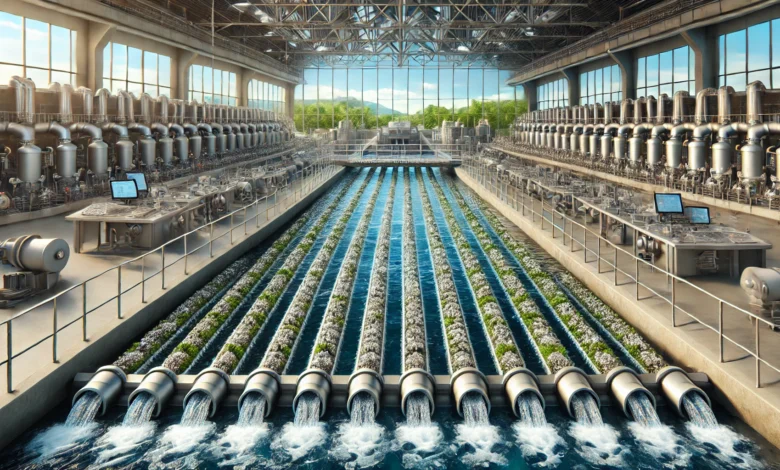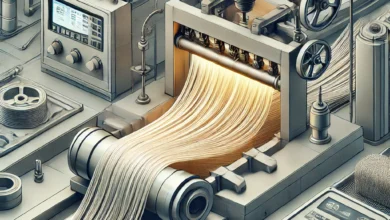Inclined Tube Settlers: Enhancing Water Treatment Efficiency with Cutting-Edge Technology

Introduction
Water is one of the most precious resources on Earth, and ensuring its cleanliness and safety is a top priority for both industrial and municipal sectors. Over the years, advancements in water treatment technology have revolutionized how we purify water, making the process more efficient and cost-effective. Among these innovations, inclined tube settlers have emerged as a game-changer, optimizing the sedimentation process and significantly improving the quality of treated water. In this blog, we will delve into how inclined tube settlers are shaping the future of water treatment by enhancing both efficiency and environmental sustainability.
Understanding the Basics of Water Treatment
Water treatment has always been essential to human health and environmental safety. It involves removing contaminants, including chemicals, organic waste, and suspended solids, to ensure the water is safe for consumption or reintroduction into natural water bodies. However, treating water efficiently has long been a challenge, especially with growing urban populations and industrial activities increasing demand. One of the critical steps in water purification is sedimentation, where solid particles are allowed to settle out of the water due to gravity.
This is where the “inclined tube settler” comes into play, revolutionizing the way sedimentation is carried out in water treatment plants. But what makes this technology so special, and how does it improve water treatment efficiency?
What are Inclined Tube Settlers?
Inclined tube settlers are essentially modular systems used to increase the rate of sedimentation in water treatment tanks. They consist of a series of parallel, inclined tubes or plates that create multiple settling surfaces for particles in the water to accumulate. The steep angle of these tubes allows particles to settle faster compared to traditional, horizontal sedimentation tanks. The result is cleaner water with fewer suspended solids and faster water treatment cycles.
How Inclined Tube Settlers Work
The working principle of inclined tube settlers is relatively straightforward, but incredibly effective. Water enters the treatment tank and flows through the inclined tubes. As it passes through, the particles in the water settle along the tube surfaces and slide down to the bottom, due to the steep inclination of the tubes. The cleaner water, now free from most solid particles, rises to the top of the tank for further treatment or storage.
The inclination of the tubes is carefully designed to maximize sedimentation efficiency. Typically, the tubes are set at an angle of about 60 degrees, which strikes a perfect balance between allowing particles to settle quickly while ensuring water continues to flow efficiently through the system.
The Science Behind Inclined Tube Settlers
Inclined tube settlers rely on the principles of laminar flow and gravity-driven particle settling. In laminar flow, water moves in parallel layers with little or no disruption between them, allowing particles to settle out without being carried away by turbulent currents. By positioning the tubes at an angle, the settlers create a longer path for particles to settle, giving them more time to fall out of suspension while maintaining a compact footprint for the treatment system.
This is a significant improvement over traditional sedimentation tanks, where particles can take longer to settle and often get caught in the flow of the water, making the process less efficient. The inclined design ensures that even tiny particles are captured, leading to cleaner water and better overall system performance.
Advantages of Using Inclined Tube Settlers
One of the main reasons for the growing popularity of inclined tube settlers is their efficiency. By dramatically speeding up the sedimentation process, they allow treatment plants to handle larger volumes of water without increasing the size of the facility. This is particularly valuable in urban areas where space is limited, and treatment facilities need to be as compact as possible.
Some key benefits include:
- Space-saving design: Inclined tube settlers can increase the capacity of existing sedimentation tanks by up to 50%, allowing facilities to treat more water without expanding their footprint.
- Energy efficiency: By optimizing the sedimentation process, inclined tube settlers reduce the need for additional energy-intensive filtration steps, lowering overall operational costs.
- Improved water quality: The settlers remove a higher percentage of total suspended solids (TSS), resulting in clearer, cleaner water.
To buy Inclined Tube Settler, visit https://www.mbbr-media.com/product/tubesettler/
Inclined Tube Settler vs. Conventional Sedimentation Tanks
When compared to conventional sedimentation tanks, inclined tube settlers offer several advantages. Traditional tanks require large surface areas and deep basins to allow particles enough time to settle out of the water. In contrast, the inclined design creates more settling surface area within a smaller tank, allowing for quicker sedimentation and a more compact overall design.
Additionally, inclined tube settlers are easier to maintain and have fewer moving parts than traditional systems, leading to lower long-term operational costs and improved reliability.
Environmental Benefits of Inclined Tube Settlers
Water treatment is not only about providing clean water but also about doing so in an environmentally sustainable way. Inclined tube settlers help reduce the carbon footprint of water treatment facilities in several ways:
- Energy savings: Their ability to speed up sedimentation reduces the need for additional mechanical or chemical filtration, both of which are energy-intensive processes.
- Sustainable design: The smaller, modular design of inclined tube settlers means they require fewer raw materials to build and maintain.
- Efficient resource use: By maximizing the use of the available space, inclined tube settlers allow water treatment plants to operate more efficiently, which can lead to reduced environmental impact over time.
Applications of Inclined Tube Settlers
Inclined tube settlers are versatile and can be used in various types of water treatment applications. Some of the most common uses include:
- Industrial water treatment: Factories and manufacturing plants use inclined tube settlers to treat water contaminated with particulate matter before discharging it into the environment.
- Municipal wastewater treatment: Cities rely on inclined tube settlers to remove solids from wastewater before it is returned to natural water bodies or used for irrigation.
- Desalination plants: In areas where freshwater is scarce, inclined tube settlers play a role in the pre-treatment process for desalination, helping to remove solids before the water undergoes further purification.
Inclined Tube Settlers in Municipal Water Treatment Plants
Many cities have successfully implemented inclined tube settlers to enhance their water treatment systems. For example, urban areas dealing with limited space and high water demand have found that inclined tube settlers offer a cost-effective solution for increasing the capacity of existing treatment plants without needing to build new facilities.
Innovations in Inclined Tube Settlers
Recent years have seen exciting advancements in the design and materials used for inclined tube settlers. Engineers are now experimenting with new polymers and coatings that improve the durability of the settlers and reduce the likelihood of clogging. Additionally, smart sensors and automation systems are being integrated into these systems to monitor performance and optimize water flow in real-time.
These innovations are crucial as global water demand continues to rise, and treatment plants must find ways to handle increasing volumes of water while maintaining high standards of cleanliness and environmental responsibility.
Maintenance and Operational Considerations
Despite their high efficiency, inclined tube settlers are relatively easy to maintain. Their modular design allows for individual tubes to be replaced or cleaned as needed without shutting down the entire system. This makes them an attractive option for treatment plants looking for low-maintenance solutions that provide reliable long-term performance.
Challenges and Solutions in Implementing Inclined Tube Settlers
While inclined tube settlers offer many benefits, there can be some challenges in implementing them in certain treatment plants. For instance, facilities dealing with very fine particles or high levels of organic material may need to pair inclined tube settlers with additional filtration systems to achieve optimal results.
However, these challenges are usually manageable, and most plants can adapt the design and operation of their settlers to meet specific water treatment needs. For example, adding pre-treatment steps such as coagulation or flocculation can help improve the performance of inclined tube settlers in demanding applications.
How Inclined Tube Settlers Enhance Water Treatment Efficiency
Ultimately, inclined tube settlers enhance water treatment efficiency by accelerating the sedimentation process, allowing plants to treat more water in less time while improving the clarity and quality of the treated water. This makes them an indispensable tool in both industrial and municipal water treatment systems, helping to meet the growing demand for clean water worldwide.
Real-World Success Stories
Many water treatment plants around the world have reported success with inclined tube settlers, noting significant improvements in both water quality and operational efficiency. These systems are now being adopted in countries facing water shortages or dealing with the challenges of rapidly growing populations.
Conclusion
Inclined tube settlers represent a breakthrough in water treatment technology, offering an efficient, space-saving, and environmentally friendly solution for both industrial and municipal applications. As the global demand for clean water continues to rise, this cutting-edge technology will play a crucial role in helping us meet the challenges of the future while protecting our most valuable resource.



